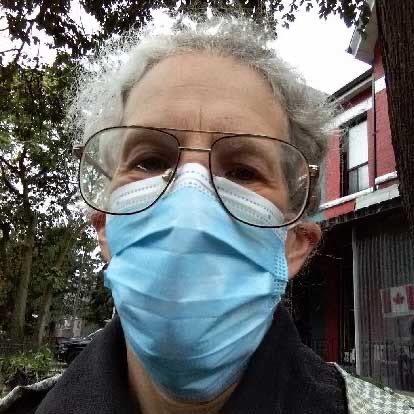After a year of intermittent threats to clear the encampment of unhoused people at St. Stephen-in-the-Fields in Toronto, staff from the City of Toronto’s Encampment Office informed the incumbent in mid-October that the yard would be cleared within a week because a “community group,” never before heard of in the community, had obtained a permit to put in a pollinator garden. The parish made the difficult decision to retain a law firm to fight this. Almost immediately, the city’s legal department stated that the permit had been withdrawn, but that the encampment would still be cleared due to a fire risk. Offers from the parish to work with the city to mitigate fire risk were refused. On Nov. 20, a judge rejected the parish’s application for an injunction to prevent the clearing.
A year ago, I wrote in this paper, “We will be, until we can be no longer, the last safe place.” On Nov. 24, after months of negotiation, struggle, compromise and crisis, that safety was broken.
It was not as bad as it might have been, when City of Toronto crews came to clear our encampment. I know that there were people within the large and complicated structure that is the City of Toronto who tried to make this less than brutal, who did what they could, and they did make a difference. Shelter Services had reserved shelter-hotel rooms for the people in the encampment who wanted them, though what this meant was that those rooms were not available for others seeking indoor space the previous night, and we know that many were turned away that night. Some people took the rooms, and that is a very good thing, though the rush, the stress, the need to pack a bag instantly and go, led to several breakdowns and medical crises over the course of the day, and some emotional damage that has not yet healed. Others were squeezed onto the small area that is indisputably church property, though we don’t know how long they will be permitted to stay. Some had already left two days earlier, when city staff first told them that the area was going to be cleared.
Then, at some point in the afternoon, one person refused to move. They had accepted referrals to shelter-hotels twice over the past year, and both times had been evicted within days for trivial reasons. This was their home, the one place that had never told them to leave. Staff from the Department of Transportation handed them a notice of trespass. They read it over, said, “You got the name wrong,” and handed it back.

We stood for hours, then, in the bitter cold – supporters, media, residents trying to rebuild their tents along the side of the church. We brought hot water bottles and French vanilla coffee and vegetarian curry to the one person who wouldn’t leave, as they wrapped themselves up in blankets and quietly whispered prayers. It was after sunset, and church volunteers were trying to serve our weekly drop-in dinner, by the time the city staff brought in the machine that we know as the Claw, a huge piece of heavy machinery that seizes tents and belongings and recycling bins indiscriminately and drags them into a trash compactor. In the dark, the Claw was driven through a narrow residential street, to scrape all signs of human occupation from half of the churchyard.
In the other half of the yard, the remaining resident and I stood protected by a patio umbrella, watching. We didn’t know if the police would be coming to take them. But police did not come for them. Good people in several different places, that night, people I know but can’t name here, were able to shape some decisions. Supporters blocked the Claw for a while, and others used the time to gather up the belongings of the people who had been hastily dispersed. The Claw moved back and forth across the small street, and neighbours, seeing it from their windows, ran down from the apartment building next door to join our supporters. It was nearly midnight by the time it ended, by the time an eight-foot- high security fence went up around half of the area that had been used as the churchyard for over 100 years, which has now been claimed by the Department of Transportation as their own. A few days later, more city trucks arrived, and, with no warning, deposited huge concrete blocks over the entire fenced area. The yard which had, for so long – long before the encampment, long before I was the incumbent – been a place where people could come when they were lost or hungry or in need of help, was now fenced and blocked, and made as inhuman as the resources of the city could make it.
But when the crews left, the one person who would not leave was still there, with their tent and their belongings, and they are still there now as I write this in early December. Others are still camped along the side of the church. The human community that has grown here has not been destroyed. And so we enter Advent. Let the skies pour down righteousness.





Take the Lenten leap